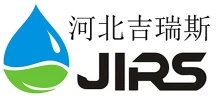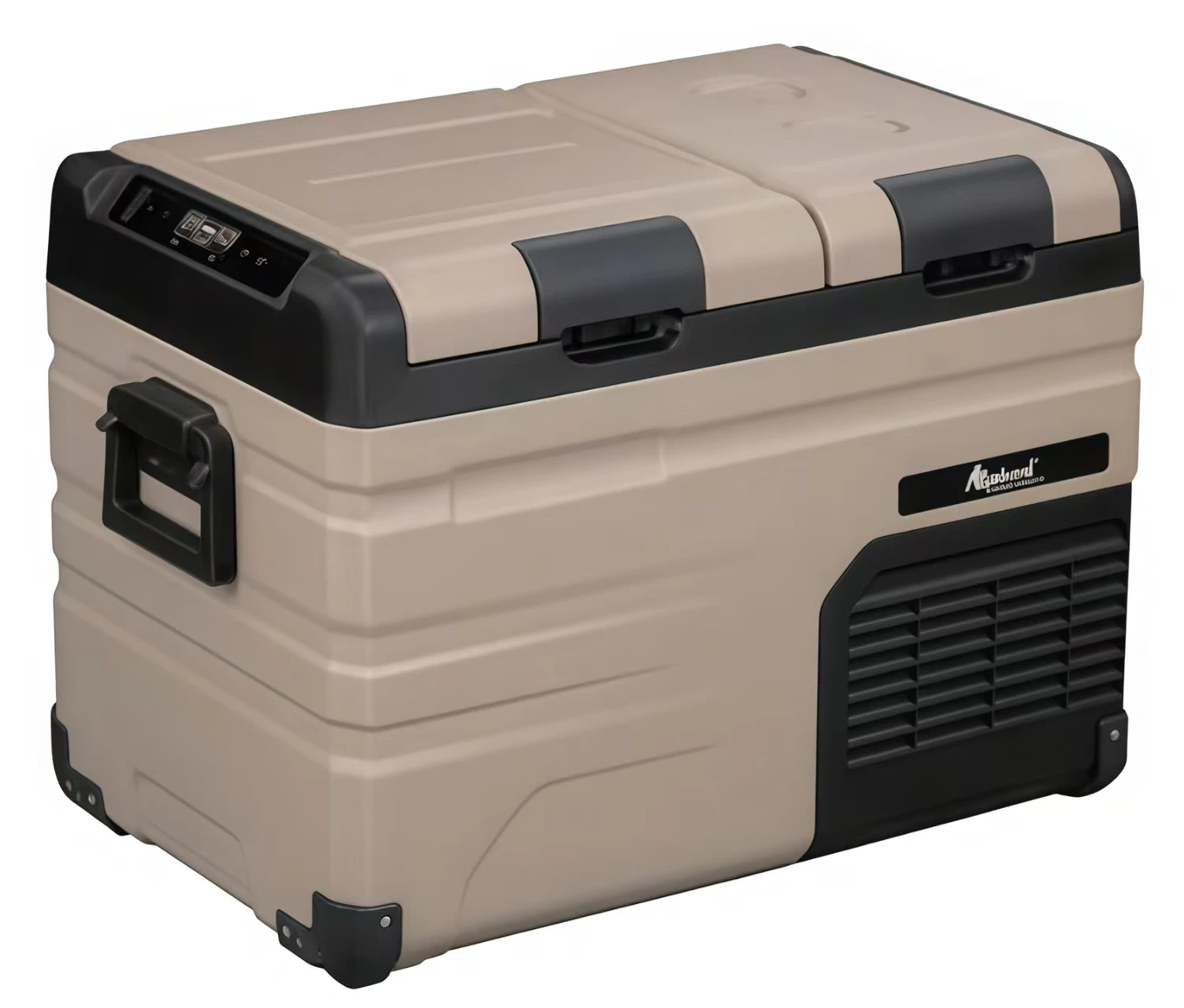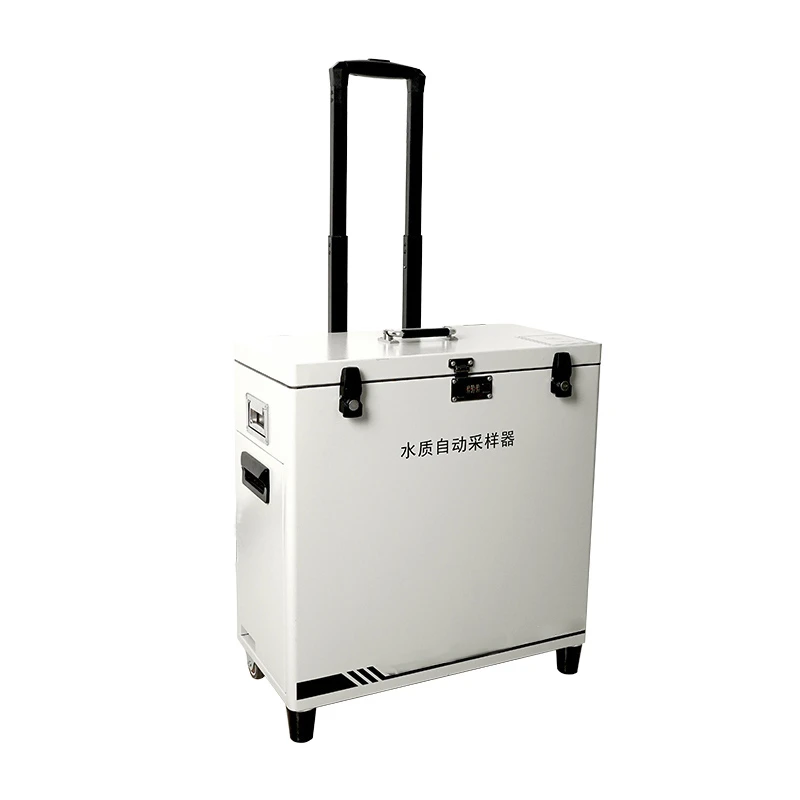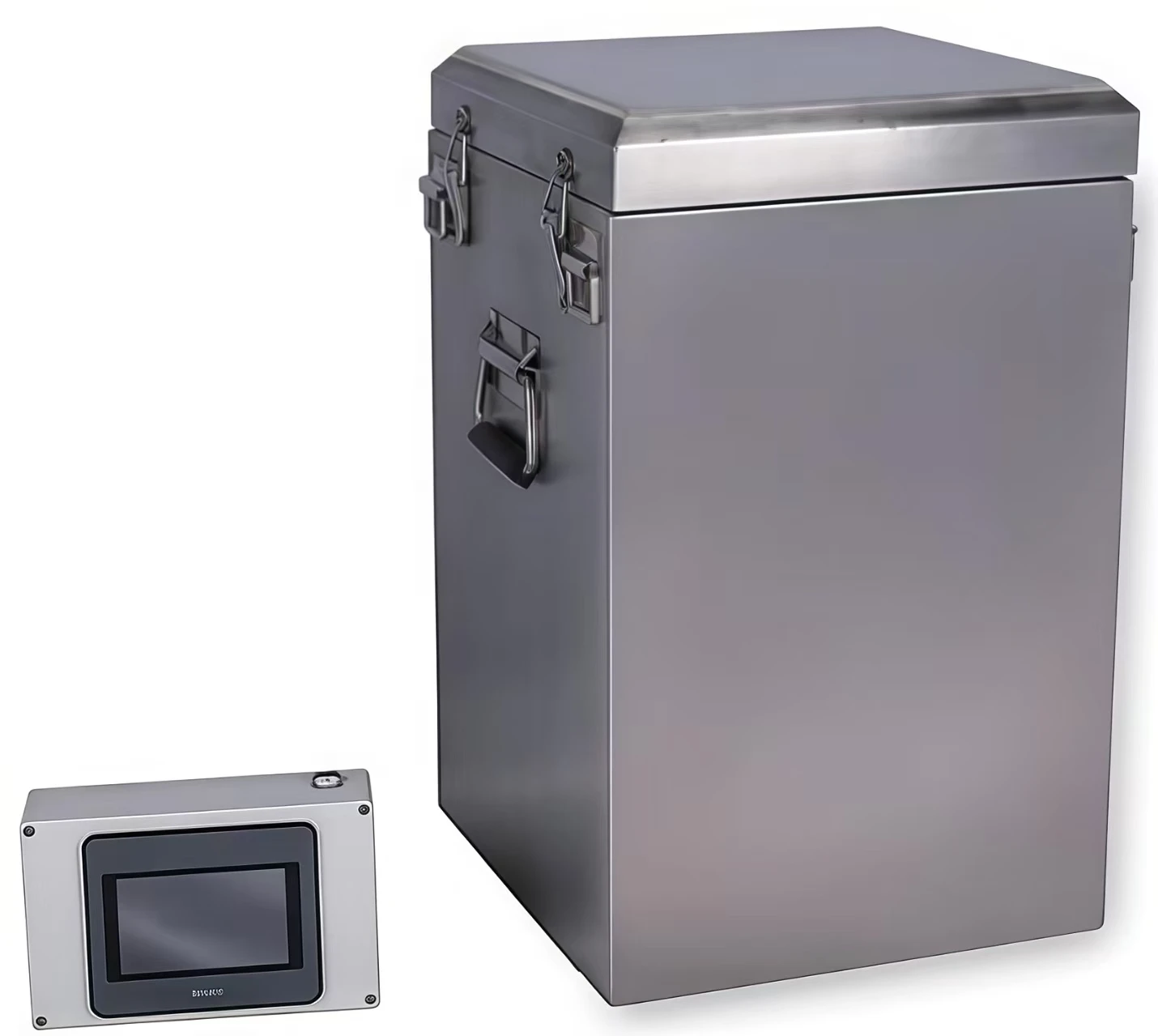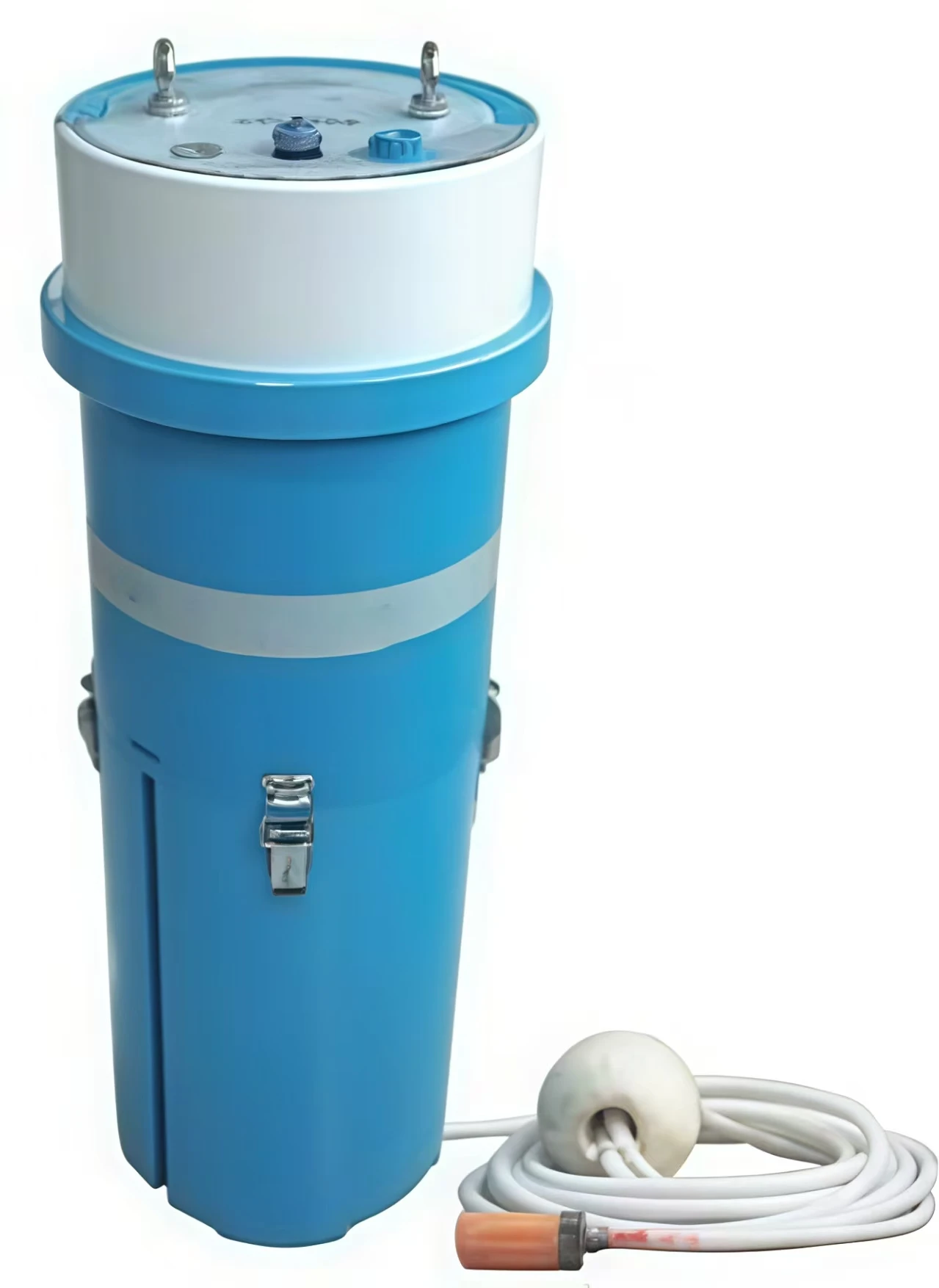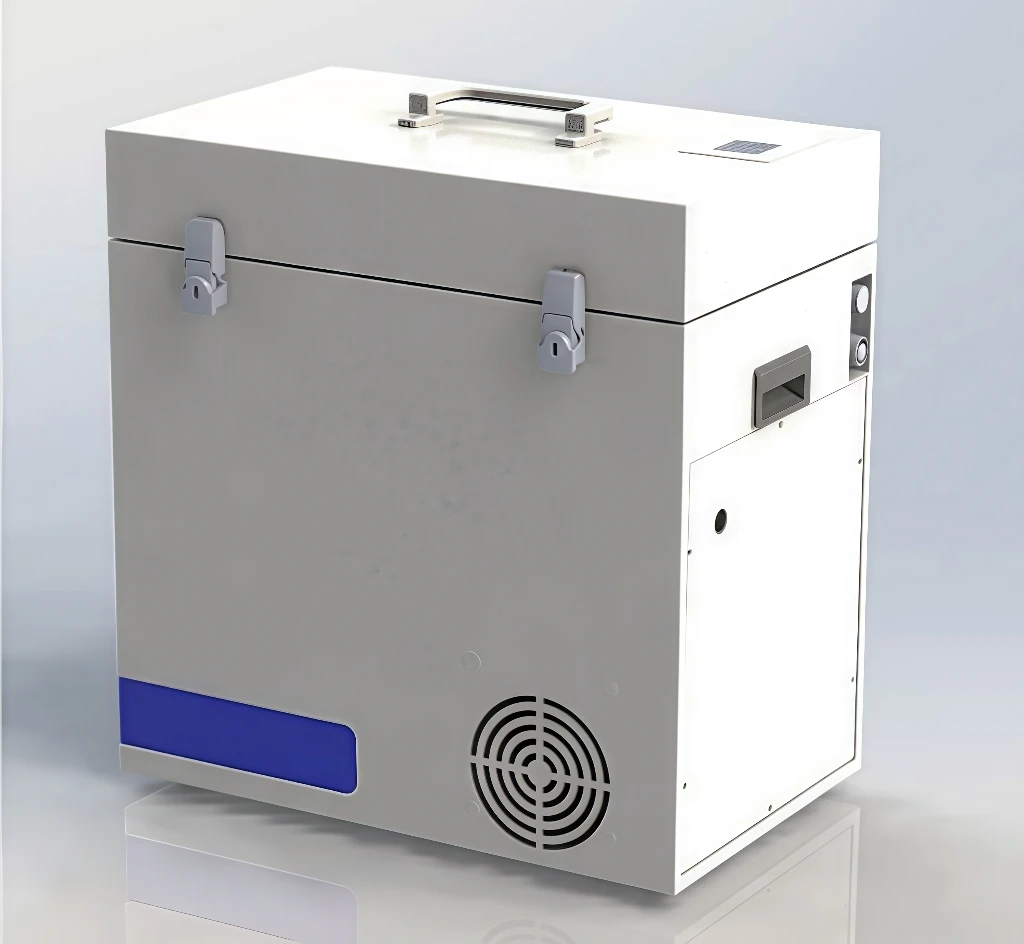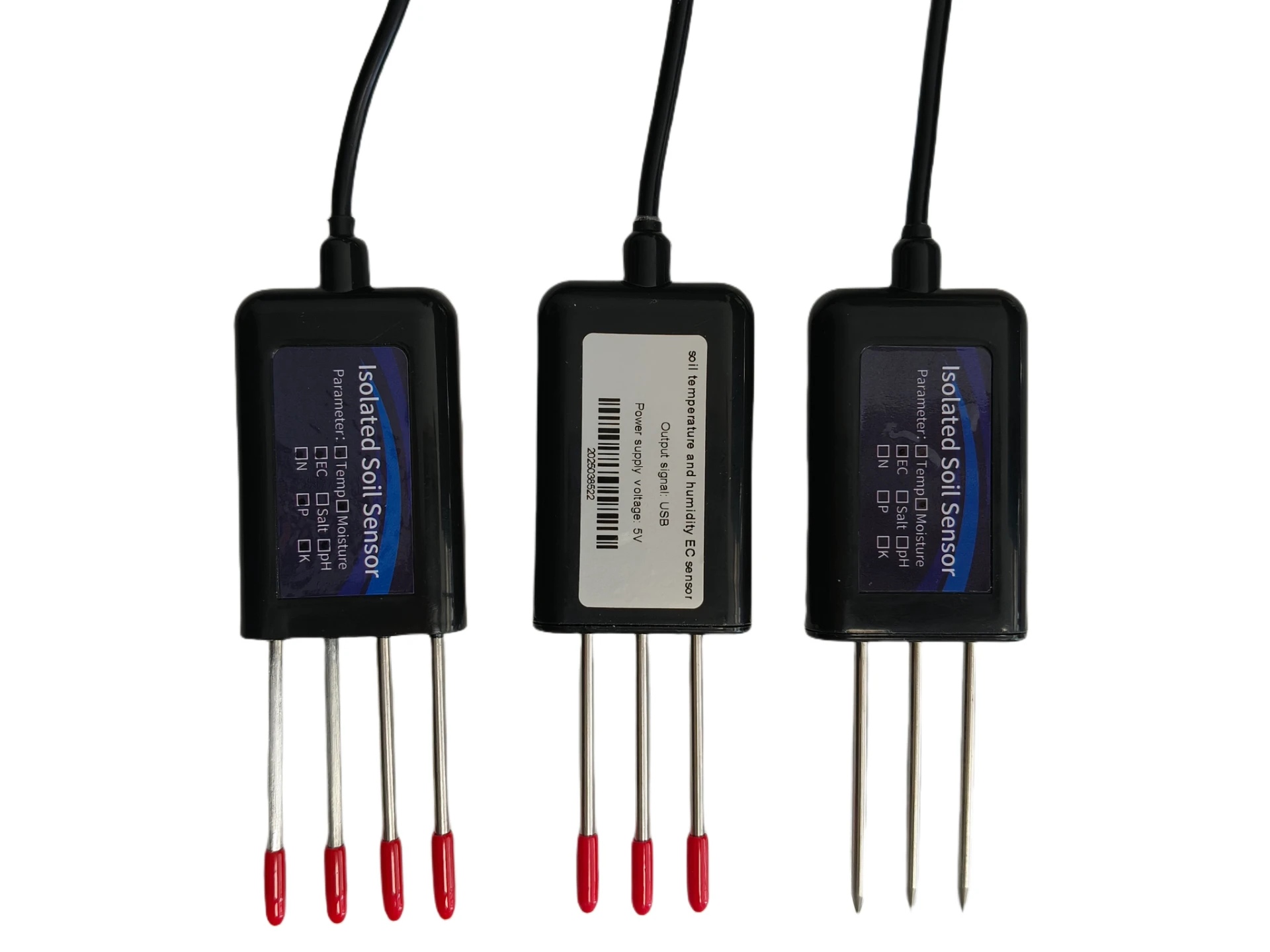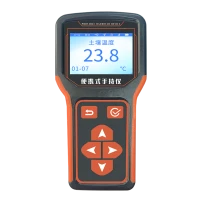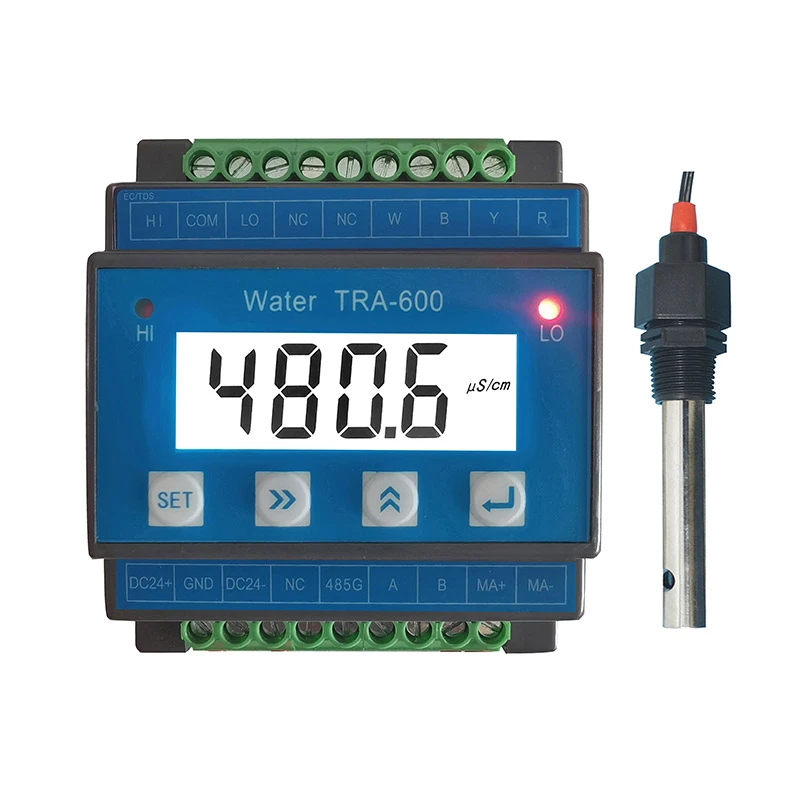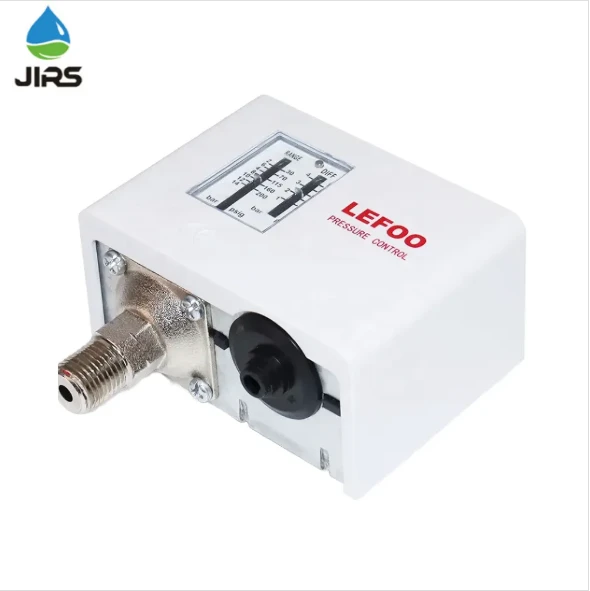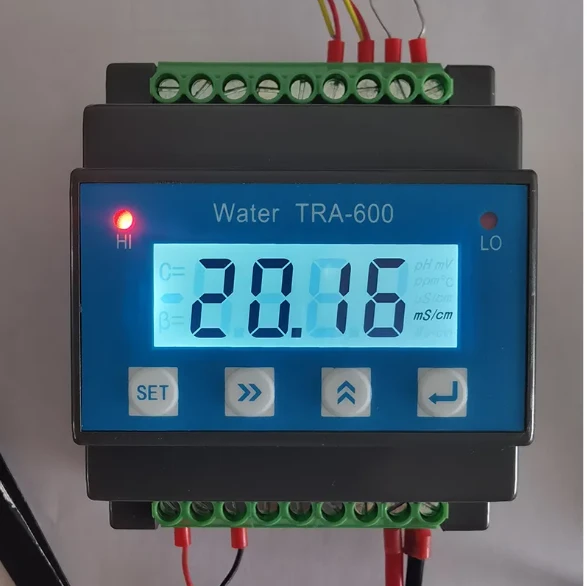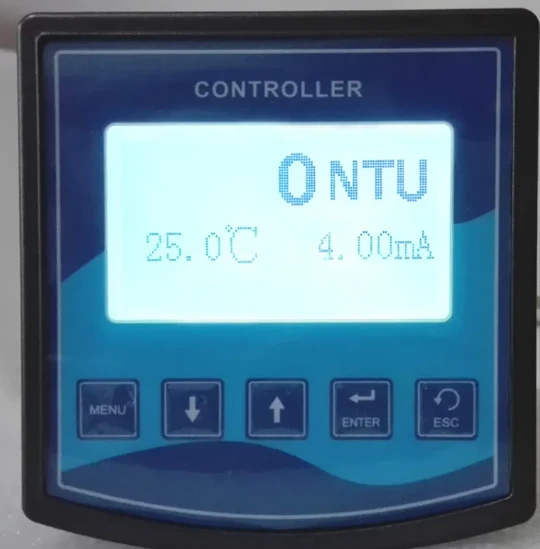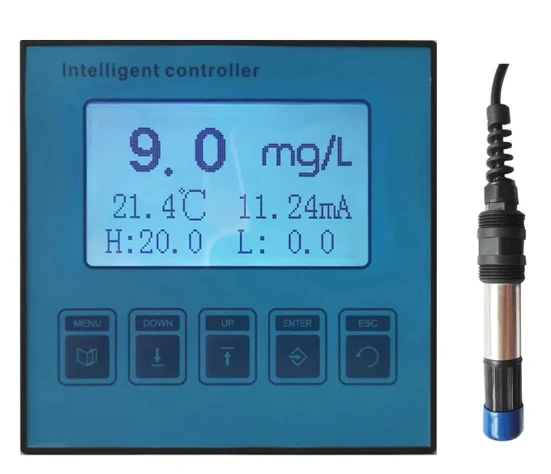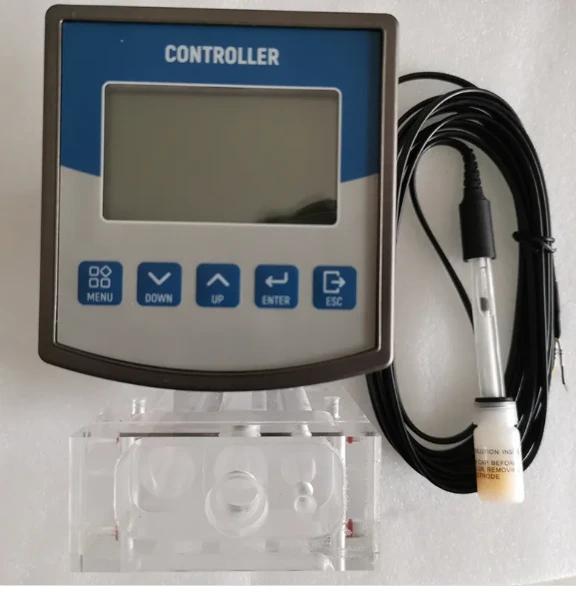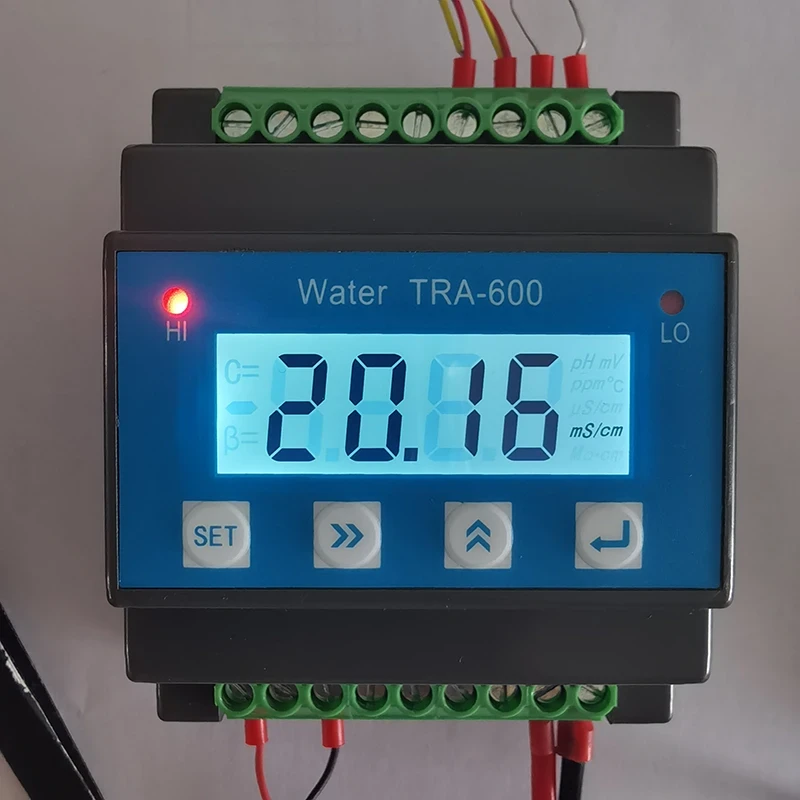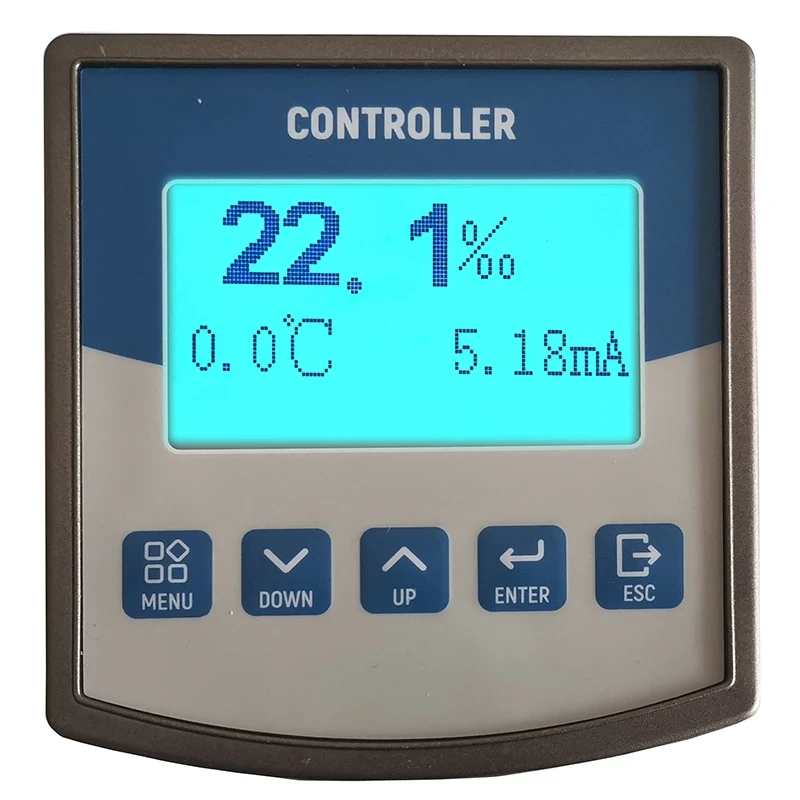PH/ORP-6850: Accurate Industrial pH/ORP Monitor & Controller
أغسطس . 19, 2025
Navigating Precision: Industry Trends in pH/ORP Measurement and the PH/ORP-6850 Paradigm
In an era defined by stringent environmental regulations, escalating operational efficiency demands, and an unwavering commitment to product quality, the precise measurement of pH and Oxidation-Reduction Potential (ORP) has transcended from a mere analytical task to a critical strategic imperative across diverse industrial sectors. Current industry trends underscore a pronounced shift towards enhanced digitalization, real-time monitoring capabilities, and the integration of robust, low-maintenance sensing technologies that can withstand harsh industrial environments. From the delicate balance required in pharmaceutical production to the aggressive chemical processes in petrochemical refining, the accuracy and reliability of pH/ORP data directly influence process optimization, waste treatment efficacy, and ultimately, profitability. Enterprises are increasingly seeking solutions that not only provide highly accurate readings but also offer extended operational lifespan, minimal calibration requirements, and seamless integration with existing control systems. This evolution necessitates advanced instrumentation capable of delivering consistent performance under varying conditions, thereby mitigating downtime and reducing total cost of ownership. The market is witnessing a surge in demand for intelligent sensors equipped with self-diagnostic features and enhanced communication protocols, ensuring data integrity and facilitating predictive maintenance. As industries globally strive for greater sustainability and compliance with ever-tightening regulatory frameworks, the role of sophisticated pH/ORP sensors becomes indispensable, driving innovation in material science, sensor design, and data analytics. This includes a growing emphasis on sensors that are resilient to fouling, resistant to chemical attack, and capable of operating effectively in high-temperature or high-pressure applications, mirroring the complex demands of modern industrial processes.
Against this backdrop of evolving industrial requirements, the PH/ORP-6850 emerges as a quintessential solution, engineered to meet and exceed these contemporary demands. It represents a significant advancement in industrial pH and ORP monitoring, designed to provide unparalleled accuracy, robustness, and longevity in the most challenging operational landscapes. Unlike conventional sensors that often succumb to rapid degradation in aggressive media, the PH/ORP-6850 incorporates cutting-edge material science and precision manufacturing techniques, ensuring its resilience and extended service life. Its design philosophy centers on delivering reliable data acquisition while minimizing the need for frequent maintenance or replacement, thereby contributing directly to operational continuity and cost savings. This instrument is not merely a sensor; it is a meticulously crafted component of an integrated process control system, offering the foresight and reliability essential for critical industrial applications. Its development is rooted in understanding the pain points of industrial operators—fouling, sensor drift, and premature failure—and addressing them with innovative design features. The PH/ORP-6850 is poised to set a new benchmark for performance in highly corrosive, high-temperature, or high-fouling environments, making it an indispensable tool for industries where precision and durability are paramount. Its contribution extends beyond mere measurement, impacting process efficiency, product quality, and environmental compliance, affirming its status as a vital asset for modern industrial operations seeking to optimize their analytical capabilities and maintain a competitive edge in a rapidly changing global market.
Unpacking the Specifications: The Technical Prowess of the PH/ORP-6850
The robust performance and remarkable durability of the PH/ORP-6850 are directly attributable to its meticulously engineered technical specifications and advanced design features, which collectively address the limitations inherent in many conventional pH/ORP sensors. At its core, the PH/ORP-6850 is designed for superior measurement accuracy across a broad spectrum of pH and ORP values, crucial for applications ranging from highly acidic industrial wastewater to alkaline process solutions. The sensor typically operates within a pH range of 0-14 and an ORP range of ±2000 mV, ensuring its versatility across nearly all industrial applications. Critical to its resilience is its construction from high-grade, chemically resistant materials, such as specific grades of engineering plastics and robust glass formulations for the sensing electrode, chosen for their ability to withstand aggressive chemical attack and extreme temperatures. Its advanced temperature compensation mechanism, often utilizing an integrated Pt1000 or NTC 10K thermistor, guarantees accurate readings even amidst significant process temperature fluctuations, mitigating measurement errors that can compromise process control. Furthermore, the design incorporates a large, high-surface-area reference junction, often employing multiple porous ceramic or PTFE diaphragms, which significantly reduces the risk of clogging and poisoning, common issues that plague traditional sensors in challenging media. This specialized junction design ensures a stable reference potential, crucial for sustained accuracy over extended periods, particularly in solutions containing suspended solids, oils, or heavy metals. The PH/ORP-6850 also typically features an integrated preamplifier, which minimizes electrical noise and allows for signal transmission over longer distances without degradation, making it ideal for large-scale industrial plants. Its robust construction and sealed body, often rated to IP68, provide exceptional protection against ingress of dust and water, enabling reliable operation in even the harshest outdoor or washdown environments.

To further illustrate the superior technical attributes of the PH/ORP-6850, the following table provides a comprehensive overview of its key operational parameters and design specifications. This data highlights not just the raw capabilities, but also the meticulous engineering that translates into tangible benefits for industrial users, such as reduced maintenance and enhanced process control.
| Parameter | Specification for PH/ORP-6850 | Industry Standard/Benefit |
|---|---|---|
| Measurement Range (pH) | 0-14 pH | Full spectrum measurement for diverse industrial applications. |
| Measurement Range (ORP) | ±2000 mV | Extensive range for redox reactions, from chlorination to detoxification. |
| Temperature Range | 0-130°C (32-266°F) | Suitable for high-temperature processes, reducing sensor degradation. |
| Pressure Rating | Up to 10 Bar (145 PSI) | Withstands high-pressure lines, enhancing application flexibility. |
| Reference System | Double Junction, Ag/AgCl with solid polymer electrolyte | Minimizes junction poisoning, extending lifespan in challenging samples. |
| Junction Material | Porous PTFE or Ceramic | Resistant to fouling and chemical attack, ensuring stable readings. |
| Body Material | Ryton (PPS) or PVDF | Exceptional chemical resistance, suitable for highly corrosive media. |
| Integrated Sensor | Pt1000/NTC 10K Temperature Sensor | Automatic temperature compensation for highly accurate, stable results. |
| Lifespan (Typical) | 1-3 years (application dependent) | Significantly longer than standard sensors, reducing replacement frequency. |
| Connectivity | Standard BNC, S7, or customizable connectors | Ensures broad compatibility with existing transmitters and systems. |
The combination of these specifications positions the PH/ORP-6850 as a leader in industrial analytical instrumentation, offering not just measurement capability but a comprehensive solution for critical process monitoring. The judicious selection of materials and components, coupled with innovative design principles, guarantees a product that delivers consistent, reliable performance even in the most demanding industrial environments. This dedication to technical excellence is what sets the PH/ORP-6850 apart, providing users with a robust and accurate tool that reduces operational headaches and contributes positively to their bottom line through superior process control and reduced maintenance cycles.
The Engineering Excellence: Manufacturing Process of the PH/ORP-6850
The superior performance and extended lifespan of the PH/ORP-6850 are not merely a result of its design specifications but are deeply rooted in a meticulously controlled and technologically advanced manufacturing process. This process adheres strictly to global quality management standards, notably ISO 9001:2015, ensuring that every unit produced meets the highest benchmarks for precision, durability, and reliability. The journey of a PH/ORP-6850 sensor begins with the careful selection of raw materials, particularly the specialized glass for the pH electrode bulb and the robust polymer for the ORP sensor, along with highly purified Ag/AgCl for the reference electrode. These materials undergo rigorous incoming quality control (IQC) to verify their chemical composition, structural integrity, and purity. The glass bulb, a critical component for pH measurement, is precisely molded and annealed to ensure optimal ion exchange properties and mechanical strength, resisting thermal shock and chemical attack. For the sensor body and protective housing, advanced manufacturing techniques like precision injection molding are employed, utilizing high-performance engineering plastics such as PPS (Ryton) or PVDF. These materials are chosen for their exceptional chemical resistance, high-temperature stability, and mechanical toughness, vital for surviving corrosive industrial environments. This contrasts sharply with many standard sensors that often utilize less robust materials, leading to premature failure in demanding applications.
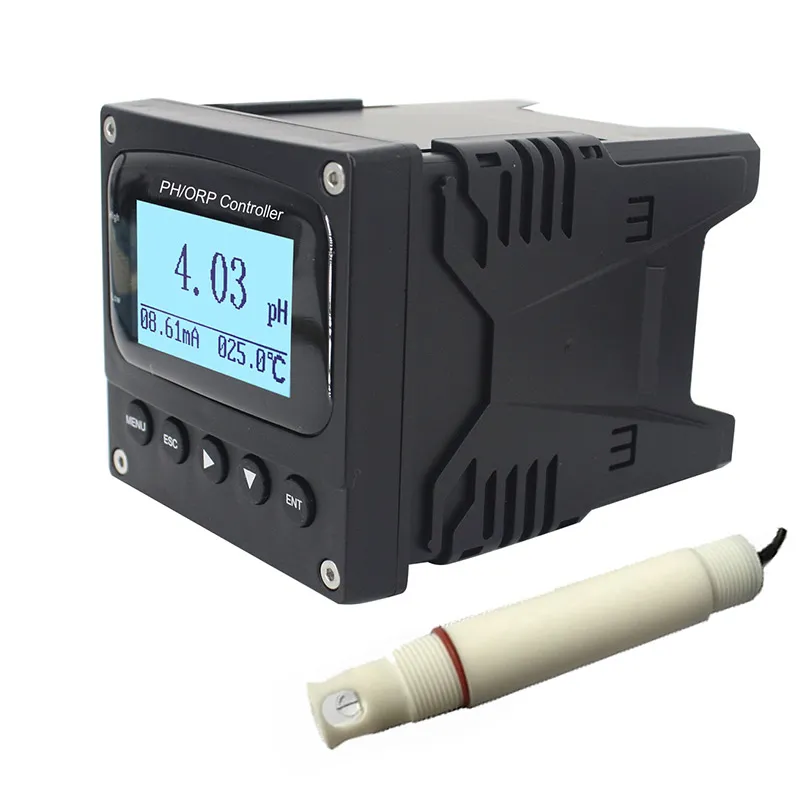
Further along the production line, the intricate reference junction, often made from porous PTFE or specially engineered ceramics, is integrated. This step is crucial for the sensor's long-term stability and resistance to fouling and poisoning. The assembly process for the internal reference system, including the Ag/AgCl element and the solid polymer electrolyte, is carried out in cleanroom environments to prevent contamination and ensure consistent electrical properties. Advanced bonding and sealing technologies are then applied to hermetically seal the sensor body, achieving an ingress protection rating of IP68, which signifies complete dust tightness and protection against prolonged immersion in water. This rigorous sealing prevents internal component degradation from moisture or process media. Each PH/ORP-6850 sensor undergoes a comprehensive series of in-process quality checks and final performance tests before leaving the facility. These include electrical leakage tests, response time verification, linearity checks across the full pH/ORP range, and temperature compensation accuracy tests. Furthermore, a subset of sensors undergoes accelerated life testing under simulated harsh conditions, far exceeding typical operational parameters, to validate the expected service life of 1-3 years and confirm resistance to specific chemicals relevant to industries like petrochemicals, metallurgy, and water/wastewater treatment. Compliance with international standards such as ANSI (American National Standards Institute) for dimensions and materials, alongside internal proprietary test protocols, ensures that every PH/ORP-6850 unit not only meets but often surpasses industry expectations. This meticulous manufacturing philosophy is the bedrock of the PH/ORP-6850's reputation for robustness, accuracy, and ultimately, its capacity to contribute to significant operational advantages like energy conservation through optimized chemical dosing, and enhanced safety by preventing equipment corrosion in typical industrial applications. The commitment to precision engineering at every stage of production translates directly into a sensor that minimizes maintenance, reduces operational costs, and provides consistent, reliable data essential for critical decision-making processes.
Applications and Advantages: Where the PH/ORP-6850 Excels
The versatility and inherent resilience of the PH/ORP-6850 make it an indispensable tool across a broad spectrum of industrial applications, particularly where precise pH and ORP measurement are critical for process control, quality assurance, and environmental compliance. In the petrochemical industry, for instance, the PH/ORP-6850 is vital for monitoring water quality in cooling towers to prevent corrosion and scaling, optimizing acid/caustic dosing in neutralization processes, and ensuring proper pH levels in wastewater streams before discharge. Its robust construction, with materials like Ryton or PVDF, allows it to endure the presence of hydrocarbons, strong acids, and elevated temperatures commonly found in refineries and chemical plants, significantly extending its operational life compared to conventional sensors that rapidly degrade in such harsh environments. Similarly, within the metallurgy sector, especially in mining operations and metal finishing processes, the PH/ORP-6850 plays a crucial role in controlling the pH of flotation slurries, managing cyanide detoxification processes, and monitoring effluent treatment to meet strict regulatory limits. Its resistance to abrasive particles and heavy metal fouling ensures consistent performance and minimizes sensor drift, which is paramount for maintaining process efficiency and preventing environmental contamination.
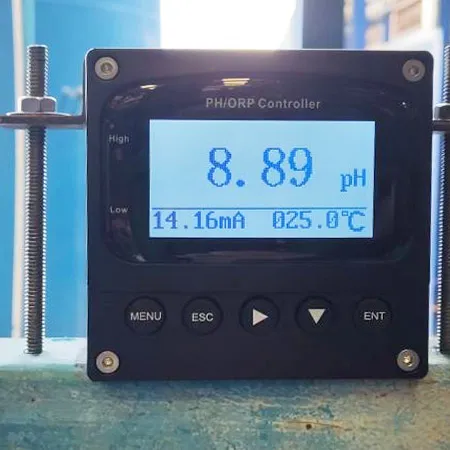
The water and wastewater treatment industry represents another cornerstone application for the PH/ORP-6850. Here, it is instrumental in monitoring pH levels throughout the entire treatment train—from raw water intake to coagulation, flocculation, disinfection (chlorination/dechlorination), and final effluent discharge. Accurate ORP measurement is equally critical for optimizing disinfection processes, ensuring sufficient oxidant levels while avoiding excessive chemical usage, which translates directly into cost savings and environmental benefits. The sensor's long-term stability and low maintenance requirements are particularly advantageous in municipal plants, where continuous operation and minimal intervention are highly valued. Beyond these core industries, the PH/ORP-6850 also finds critical applications in the pharmaceutical industry for fermentation control and wastewater neutralization, in the food and beverage sector for CIP (Clean-In-Place) processes and product quality control, and in pulp and paper manufacturing for bleach plant control and effluent monitoring. The key technical advantages that the PH/ORP-6850 brings to these diverse scenarios include its exceptional chemical resistance, which vastly extends its operational lifespan in aggressive media, thereby reducing sensor replacement costs and maintenance downtime. Its high accuracy across a wide temperature range, facilitated by integrated temperature compensation, ensures reliable data for precise process adjustments, leading to improved product consistency and reduced chemical consumption. The robust junction design minimizes fouling, a common cause of sensor failure and drift, allowing for longer periods between cleaning cycles and recalibrations. This directly translates to significant energy savings through optimized chemical dosing, reduced waste generation, and enhanced overall operational efficiency, underscoring the profound impact of the PH/ORP-6850 on industrial sustainability and profitability. Customer feedback consistently highlights the PH/ORP-6850's superior longevity and stability in applications where previous sensors failed prematurely, providing a clear return on investment.
Strategic Advantage: Why the PH/ORP-6850 Outperforms
In a highly competitive market populated by numerous pH/ORP sensor manufacturers, the PH/ORP-6850 distinguishes itself not merely through incremental improvements but through a strategic blend of innovative design, superior material science, and a deep understanding of industrial operational challenges. While many conventional industrial sensors offer basic measurement capabilities, they often fall short in specific areas critical for demanding applications: a common issue is rapid degradation of the reference junction due to poisoning or fouling in media with high concentrations of sulfides, heavy metals, or organic compounds. Another frequent drawback is compromised accuracy at extreme temperatures or pressures, or a susceptibility to mechanical damage in agitated processes. The PH/ORP-6850 directly addresses these vulnerabilities. For instance, its advanced double-junction reference system, often coupled with a highly resilient porous PTFE or ceramic junction, offers unparalleled resistance to chemical poisoning and physical fouling. This means the sensor maintains its stability and accuracy for significantly longer periods, reducing the frequency of costly recalibrations and replacements. Unlike some sensors that rely on less robust materials, the PH/ORP-6850's body construction, typically from Ryton (PPS) or PVDF, provides superior chemical and thermal resistance, extending its operational life in highly corrosive or high-temperature environments where standard glass or epoxy sensors would quickly fail. This translates into measurable cost savings and improved operational uptime for clients.
Beyond its inherent robustness, the PH/ORP-6850 offers distinct advantages in terms of measurement precision and long-term stability. Its integrated temperature compensation system, for example, is highly optimized, ensuring accurate pH readings even when process temperatures fluctuate dramatically, a common scenario in many industrial settings. This superior compensation mechanism contributes to greater process control and reduces the likelihood of product inconsistencies or non-compliance. Furthermore, the capability for custom-tailored solutions based on the PH/ORP-6850 platform significantly enhances its value proposition. Clients often face unique challenges regarding sensor mounting, cable length, connector types, or specific chemical compatibility requirements. Our engineering team leverages the modular design of the PH/ORP-6850 to provide bespoke solutions, whether it involves specific immersion lengths for challenging tanks, custom process connections (e.g., NPT, flange, sanitary), or integrating specialized preamplifiers for extremely long cable runs. This adaptability ensures that the PH/ORP-6850 is not just a general-purpose sensor but a precisely engineered fit for specific process requirements, maximizing its effectiveness and minimizing integration complexities. Our extensive service record, spanning over two decades in critical industries, underscores our ability to deliver reliable, high-performance analytical solutions. Testimonials from major players in the petrochemical and wastewater sectors consistently highlight the PH/ORP-6850's ability to operate reliably in conditions where competitor sensors repeatedly failed, confirming its status as a premium, long-term investment for critical process monitoring. This commitment to both product excellence and client-specific customization positions the PH/ORP-6850 as a preferred choice for discerning industrial decision-makers.
Ensuring Trust and Reliability: The PH/ORP-6850 Commitment
Building and maintaining trust with our B2B clients is paramount, especially when delivering critical instrumentation like the PH/ORP-6850. Our commitment to reliability is demonstrated through rigorous adherence to industry standards, transparent operational procedures, and robust customer support. We understand that purchasing specialized equipment involves significant investment and the need for assurance. Every PH/ORP-6850 sensor undergoes stringent quality control procedures, backed by comprehensive ISO 9001:2015 certification, ensuring that each unit meets the highest international benchmarks for manufacturing quality and performance consistency. Our long-standing partnerships with leading industrial players, cultivated over decades of service, are a testament to our products' unwavering reliability and our company's dedication. We provide detailed test data with each batch of sensors, offering complete traceability and verification of performance parameters. Our manufacturing facilities are regularly audited by third-party certification bodies, further reinforcing our commitment to excellence. We also maintain a dedicated team of technical experts and field service engineers, providing unparalleled pre-sales consultation and post-sales support, ensuring that clients can maximize the value of their PH/ORP-6850 investment. This comprehensive approach, combining certified quality with expert human support, underscores our authoritative position in the industrial analytics market and builds deep-seated trust with our global clientele.
For logistical planning and operational continuity, understanding delivery timelines and warranty provisions is crucial. Standard delivery for the PH/ORP-6850 typically ranges from 2 to 4 weeks, depending on the order volume and customization requirements. For urgent projects, expedited shipping options are available upon request. We maintain a robust supply chain and optimized production schedule to minimize lead times, ensuring that your critical operations receive the necessary instrumentation promptly. Each PH/ORP-6850 sensor comes with a comprehensive 12-month limited warranty, covering manufacturing defects and material failures under normal operating conditions. This warranty reflects our confidence in the product's quality and durability. Beyond the warranty period, we offer extensive technical support and repair services, including sensor reconditioning where feasible, to extend the product's service life and protect your investment. Our commitment to customer satisfaction extends throughout the product lifecycle, with readily available technical documentation, troubleshooting guides, and a responsive customer service team accessible via phone, email, and online portals. We also offer on-site training and installation support for complex deployments, ensuring seamless integration and optimal performance of the PH/ORP-6850 within your existing systems. Our service cases frequently highlight instances where timely intervention by our support team prevented significant operational disruptions, underscoring our dedication to providing an exceptional experience beyond just product delivery.
Frequently Asked Questions (FAQ) about PH/ORP-6850
-
Q: How often does the PH/ORP-6850 need calibration?
A: The calibration frequency for the PH/ORP-6850 is highly dependent on the application's complexity, the process media's aggressiveness, and required measurement accuracy. In typical water treatment applications, monthly calibration might suffice. However, in highly corrosive or fouling environments (e.g., chemical processing, high-solids slurries), weekly or bi-weekly calibration might be necessary to maintain optimal accuracy. The robust design of the PH/ORP-6850 aims to extend these intervals compared to conventional sensors. -
Q: Can the PH/ORP-6850 be used in high-temperature applications?
A: Yes, the PH/ORP-6850 is specifically designed for high-temperature environments, with an operational range typically up to 130°C (266°F). Its high-temperature glass formulation and robust body materials ensure stable and accurate readings even under extreme thermal stress, making it suitable for processes like boiler water monitoring or hot effluent streams. -
Q: What is the expected lifespan of the PH/ORP-6850?
A: The lifespan of the PH/ORP-6850 varies significantly with application severity. In less aggressive environments, it can last 2-3 years or more. In harsh chemical processes or applications prone to fouling, a lifespan of 1-1.5 years is typical, which is still considerably longer than many standard industrial sensors. Regular cleaning and proper maintenance contribute to maximizing its service life. -
Q: Is the PH/ORP-6850 compatible with third-party transmitters?
A: The PH/ORP-6850 is typically supplied with standard industrial connectors (e.g., BNC, S7) and can be easily integrated with most widely used pH/ORP transmitters on the market. We recommend verifying specific compatibility with your existing instrumentation, and our technical support team is available to assist with integration inquiries and provide guidance on suitable pairings.
Conclusion: The Future of Industrial pH/ORP Measurement with PH/ORP-6850
The industrial landscape is continuously evolving, demanding analytical solutions that are not only precise but also exceptionally durable, reliable, and cost-effective over their operational lifespan. The PH/ORP-6850 stands as a testament to advanced engineering and material science, meticulously designed to meet and surpass these rigorous demands. From its robust manufacturing process, adhering to stringent ISO and ANSI standards, to its exceptional performance in the most challenging environments across petrochemical, metallurgy, and water/wastewater treatment industries, the PH/ORP-6850 redefines the benchmarks for industrial pH and ORP measurement. Its unique advantages, including superior chemical resistance, extended operational life, minimal maintenance requirements, and precise temperature compensation, directly translate into significant operational efficiencies, reduced downtime, and lower total cost of ownership for industrial facilities. The capability to provide customized solutions further solidifies its position as a versatile and indispensable tool, tailored to the specific needs of diverse applications. By choosing the PH/ORP-6850, industries are not just acquiring a sensor; they are investing in a comprehensive, reliable analytical solution backed by extensive expertise, rigorous quality assurance, and unwavering customer support. This strategic investment empowers businesses to optimize their processes, ensure regulatory compliance, enhance product quality, and ultimately, drive sustainable growth in an increasingly competitive global market, affirming the PH/ORP-6850 as the definitive choice for critical pH and ORP monitoring.
References
- International Organization for Standardization (ISO). ISO 9001:2015 - Quality management systems – Requirements.
- American National Standards Institute (ANSI). Various standards related to industrial instrumentation and materials.
- "Principles of Instrumental Analysis", by Douglas A. Skoog, F. James Holler, and Stanley R. Crouch.
- "Handbook of Environmental Engineering", by Frank R. Spellman.
- "Corrosion Engineering: Principles and Practice", by Pierre R. Roberge.
Related Products
Related News
